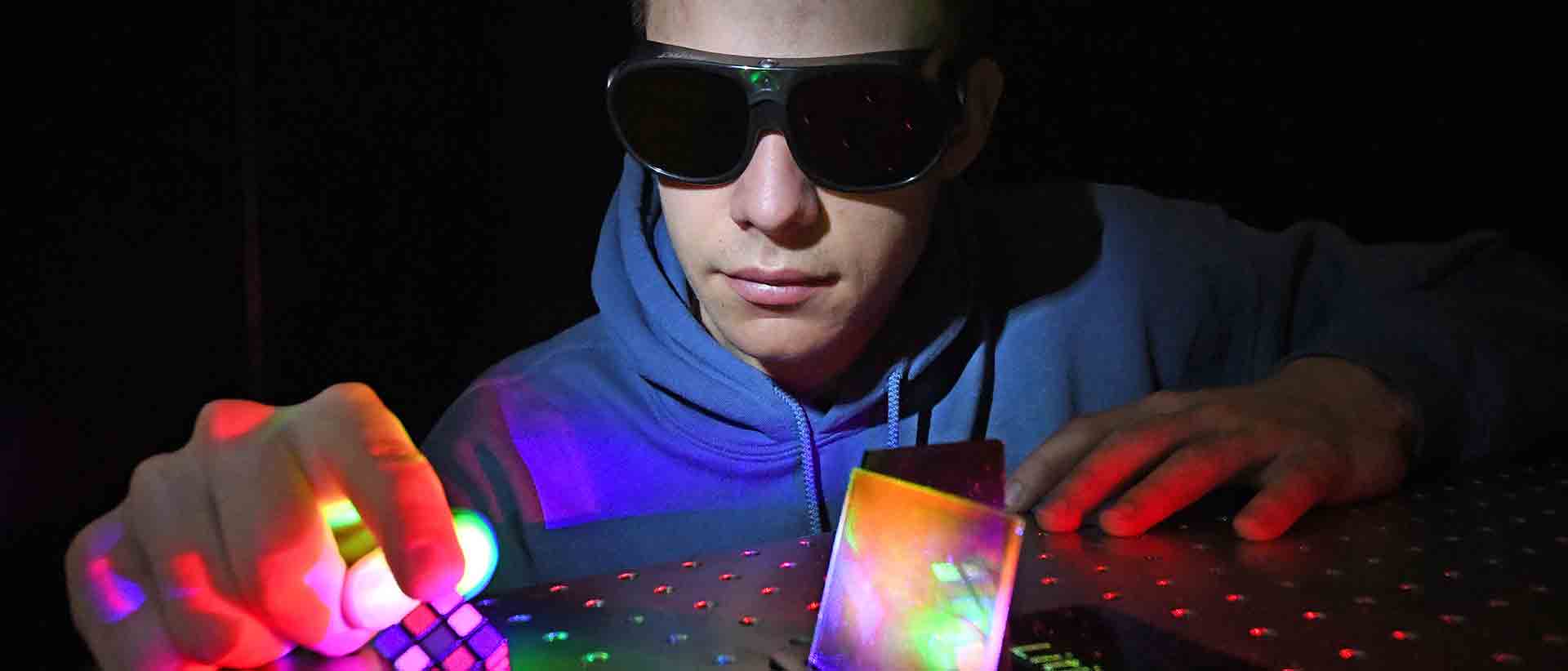A Rubik's Cube hologram

My name is Patrick Schäffer, and I am in the 11th grade at Munich’s Max Planck Gymnasium. I am currently writing a report on holography as part of my W-Seminar “Lasers in Medicine and Technology”. I have always been interested in physics and physics experiments. In the 9th grade, I had the opportunity to spend a week doing an internship at MENLO Systems, one of the leading laser technology companies in Germany.
During my week at MENLO, I not only gained an insight into working at a physics company, but also had my enthusiasm for laser physics sparked. So, when a W-Seminar on the topic of lasers was offered at my school, the choice was easy. The decision on which specific seminar theme to work on was considerably more difficult. I chose holography thanks to a visit to the PhotonLab. There, we were offered an insightful lecture on the fundamentals of holography and had the opportunity to familiarize ourselves with laser physics experiments. One particular experimental setup sparked my interest in holography. Behind a glass plate, a 3-dimensional car seemed to float after being illuminated by a laser. On the way home, an infinite number of questions ran through my head: “How can you store information about a 3-dimensional object on this glass plate?”, “How was this image taken?” And “Could I produce that myself?”. It was only logical that, after reading up on the subject, I returned to the PhotonLab to carry out experiments myself. After my arrival and a brief introduction to laser safety, I started experimenting immediately. I used an experimental kit, which, to my delight, included a newly developed type of photographic film for recording holograms. This film allowed me to create my own holograms in a few minutes, removing the protracted and difficult process of chemical development. Within a few hours, I produced my first transmission and reflection holograms, which I was later allowed to take home with me.
The creation of colored holograms proved to be much more challenging. To capture the colors of the object, lasers were used in the colors red, blue and green: the primary colors from which every other color is composed for the human eye. For the additional effort of adjusting the lasers to different strengths, we were rewarded with a colorful hologram representing a Rubik's Cube.
During my two days working in the student laboratory, I was able to experiment with holography ranging from simple transmission holograms to complex, colored white light holograms. This newly gained experience has been very thought-provoking, and I will be able to apply it to my seminar work.










